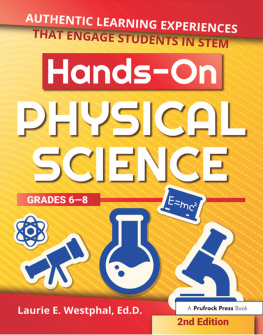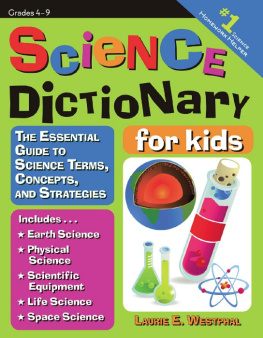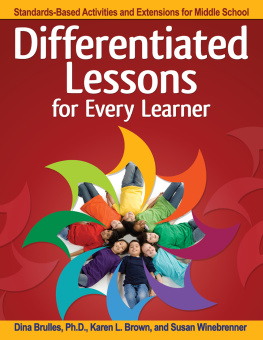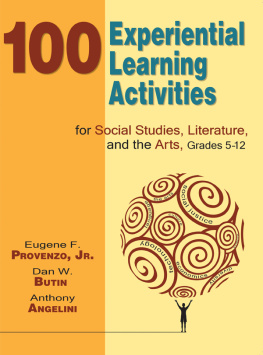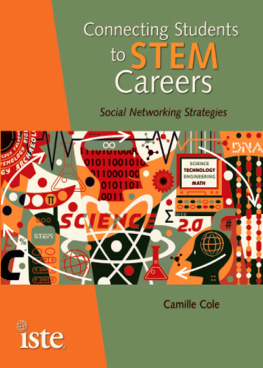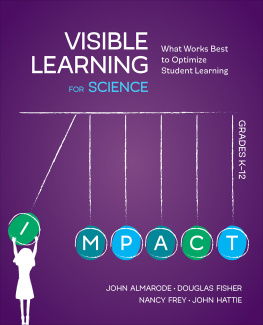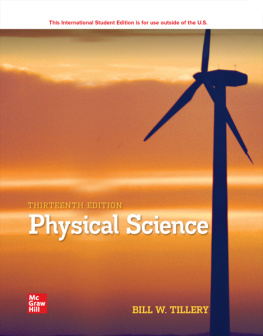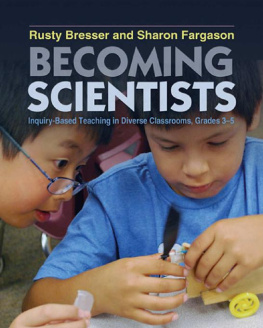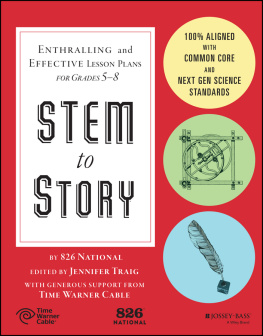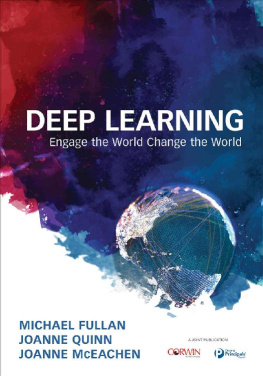
Hands-On PHYSICAL SCIENCE
AUTHENTIC LEARNING EXPERIENCES THAT ENGAGE STUDENTS IN STEM
Hands-On PHYSICAL SCIENCE GRADES 6-8
E=mc2 2nd Edition
Laurie E. Westphal, Ed.D.

First published in 2019 by Prufrock Press Inc.
Published in 2021 by Routledge
605 Third Avenue, New York, NY 10017
2 Park Square, Milton Park, Abingdon, Oxon OX14 4RN
Routledge is an imprint of the Taylor & Francis Group, an informa business.
Copyright 2019 by Taylor & Francis Group.
Cover and layout design by Micah Benson
All rights reserved. No part of this book may be reprinted or reproduced or utilised in any form or by any electronic, mechanical, or other means, now known or hereafter invented, including photocopying and recording, or in any information storage or retrieval system, without permission in writing from the publishers.
Notice:
Product or corporate names may be trademarks or registered trademarks, and are used only for identification and explanation without intent to infringe.
ISBN-13: 978-1-0321-4390-3 (hbk)
ISBN-13: 978-1-6182-1857-5 (pbk)
DOI: 10.4324/9781003235491
TABLE OF CONTENTS
Guide
DOI: 10.4324/9781003235491-1
According to Merriam-Webster, physical science is defined as any of the natural sciences (as physics, chemistry, and astronomy) that deal primarily with nonliving materials. Everything we do and encounter daily is somehow impacted by the physical sciences, from the simple act of walking to speaking with others.
Physical Science and Other Disciplines
Without an understanding of the physical sciences, we would not be able to explain everyday processes that take place around us. Physical science also crosses into other disciplines.
- MathematicsMathematics is the language of science and a cornerstone for most physical science concepts. In order to record physical science data accurately, students need to choose appropriate units and accurately read measurement tools. Once measurements are recorded, mathematics plays an important role in various calculations and manipulations of data in order to draw appropriate conclusions.
- EngineeringEngineering is design of new ideasproducing something useful that often addresses a problem. History is filled with many scientists who have used their understanding of physical science concepts to answer questions and develop new technologies.
- TechnologyTechnology is not just use of the appropriate scientific equipment; it also represents new ideas or equipment that can be used to address a problem. Physical science principles undermine the different technologies being developed to improve our lives, whether we are considering the electricity that flows through semiconductors in our electronics or the mechanism in hearing aids that helps amplify sound.
- Language ArtsLanguage arts and physical sciences are deeply connected. When conducting experiments, it is critical that the data obtained and the conclusions drawn can be communicated in a clear and concise manner through expository writing. The other connection occurs when students are asked to process physical science concepts in a new and creative way through creative writing.
- HistoryPhysical science discoveries have had significant impact on history. Developments by scientists have impacted the quality of life throughout history. These scientific discoveries often are the missing pieces that explain why certain progress was made that could not have been made previously.
- Oral Communication SkillsAfter experiencing an activity, students often are asked to communicate their thoughts and ideas with their classmates. The more often they discuss their ideas using appropriate scientific vocabulary, the more proficient they become not only in science, but also in speaking and defending their ideas. Students also spend time creating presentations that are shared with classmates, who will, in turn, provide constructive criticism for the betterment of future presentations.
Why Is This Book Needed?
Teachers either really enjoy the physical sciences or really dread them. Those who enjoy the physical sciences love to see the looks of surprise and wonder on their students faces when students encounter unexpected results or see an everyday concept in a new way for the first time. Those who dread the physical side of science usually have the fear of what could go wrong with the whiz-bang demonstrations or experiments, or if students ask a higher level question about a concept.
Everyone knows there are great hands-on experiences for students in the physical science areas. Although they command the attention of students, sometimes students can get caught up in the excitement and miss the point of the experience. The focus of this book is to share a balance between the exciting and the important concepts taught in physical science. This book strives to meet this need for balance.
Most physical science concepts are abstract in nature. We can view the results or examples of physical science concepts, but you cannot bring Newtons first law of motion for show and tell, as you could a leaf as an example of part of a plant. The idea that this branch of science is abstract often makes it more difficult for students to understand. Therefore, I strive to make the abstract more concrete, yet also maintain the validity of the concepts.
This book introduces and reinforces key physical science concepts appropriate for grades 68. Activities and products were specifically chosen to meet the Next Generation Science Standards (NGSS). The NGSS shift the way in which the instructional process should be implemented compared to other science standards. This shift is quite clear. The focus of the standards calls for the change in instruction from teacher-centered to student-centered. The standards suggest that all students are not alike and the interests, experiences, and needs of the individual students should be considered during the learning process. This should include how the teacher designs and chooses activities, experiences, and product options for his or her students. The standards also focus on the idea that scientific inquiry and student-designed experiences should have a primary role in the introduction and processing of information rather than simply the use of lectures and texts. The standards also call for a movement away from recitation of acquired knowledge, instead asking teachers to provide opportunities for students to work together to experience and discuss the scientific concepts being presented. Students and their needs should be the primary focus in science education.
The activities included in this book were chosen for their appropriateness in meeting the Next Generation Science Standards. Each activity asks students to discuss, process, and experience their new scientific knowledge. The products that drive the instruction encourage student choice, are open-ended, and reinforce key scientific processes. The various cooperative experiences were selected to encourage scientific thinking rather than simply answering questionsstudents address problems through student-designed products or engage in unique demonstrations or collaborations with peers. The various experiences, activities, and products contained in this book encourage students to become independent scientific thinkers.
Next page
